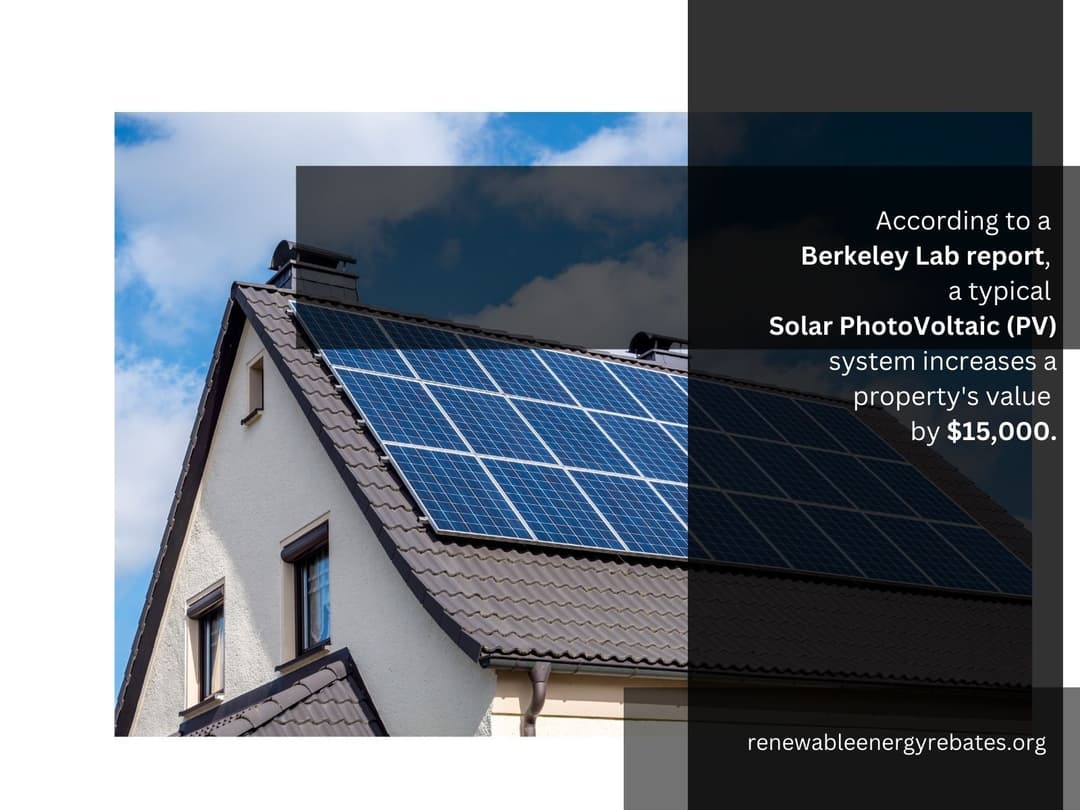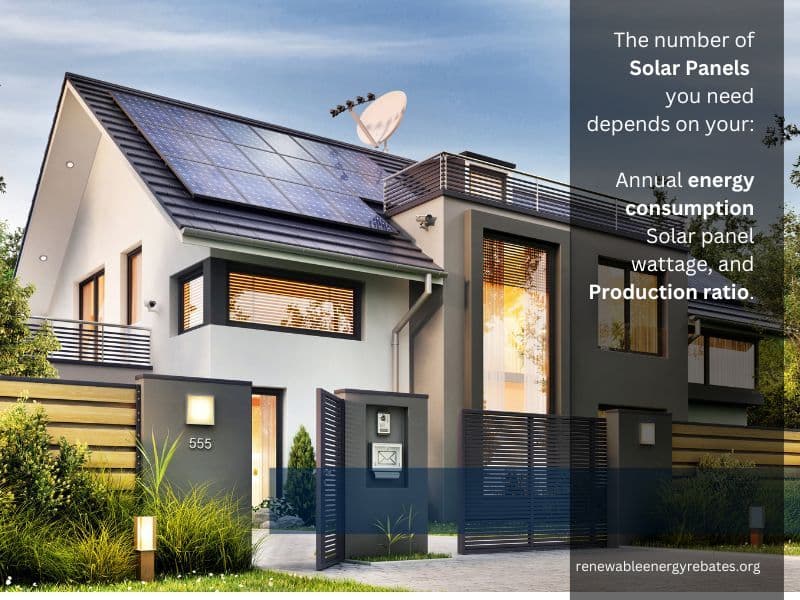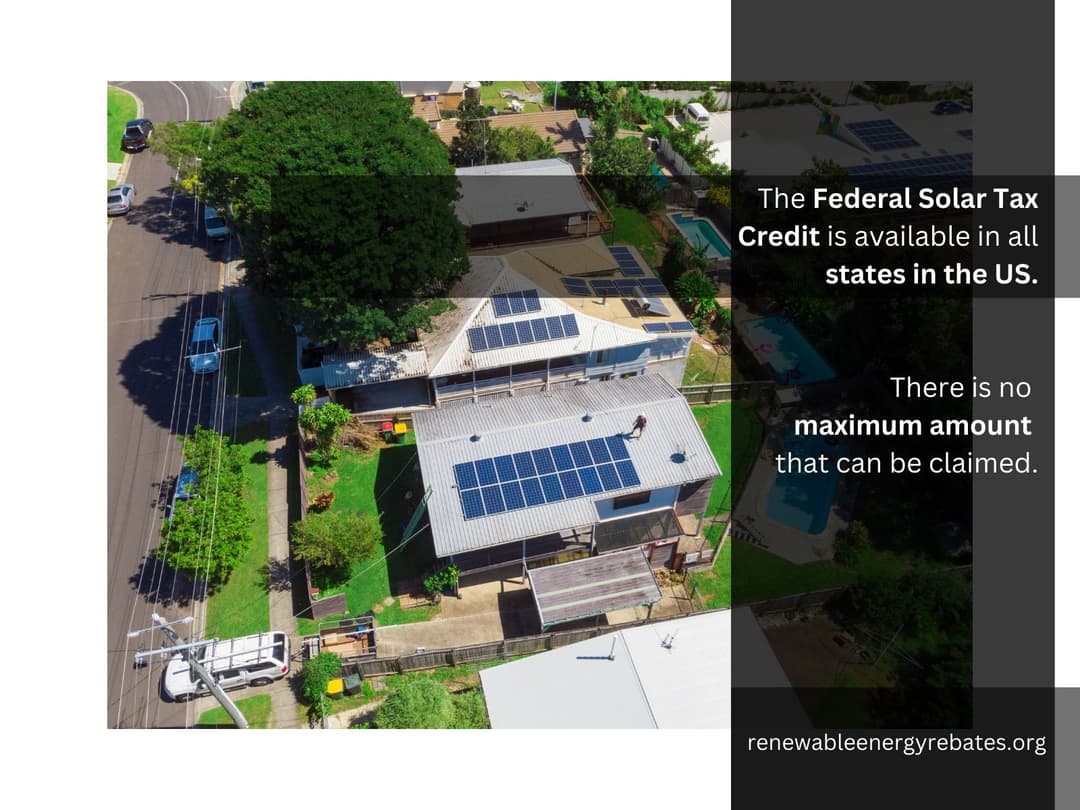Cost of Solar Panels in Montana
Key Details
- Solar panels in Montana range from $2.40 to $2.54 per watt, which is significantly lower than the national average of $3 to $5 per watt.
- The Federal solar tax credit and the Montana state tax credit help reduce the cost of installing solar panels in the state.
- Before incentives and tax credits, a 6kW solar panel system can cost up to $15,240; after credits and rebates it reduces to about $10,668.
- Going off-grid in Montana requires a big enough solar system depending on typical energy usage and home size, plus installation of a battery backup system.
How Much Do Solar Panels Cost in Montana?
The average cost for an installed solar panel in Montana as of 2023 ranges from $2.40 to $2.54 per watt, which is lower than the national average of $3 to $5. Most residential homes in Montana require up to 6 kW solar panel systems.

Installing a 6kW solar energy system in Montana costs up to $15,240 (at $2.54 per watt) before incentives and rebates. Applying for the 30% federal solar tax credit significantly reduces the solar panel cost in Montana to about $10,668.
Adding the Montana state tax credit, which offers a rebate for the purchase and installation of solar panels up to $500 per taxpayer, the cost further reduces to $10,168.
The Montana tax credit can be up to $1,000 if two taxpayers live on the property.
The national average rate of $3 to $5 per watt brings a 6kW residential system to $15,000 to $25,000 before tax incentives and rebates and $10,500 to $17,500 afterward. Solar panel installations in Montana are, therefore, up to 41% cheaper than the national average
Note: Montana’s average electricity rate is 9.5 cents per kWh compared to 9.02 cents per kWh for solar energy. Over the lifetime of the solar panel, the solar energy rate will further reduce to 5 cents per kWh, which makes solar energy cheaper than electricity from the grid in Montana.
Average Solar Panel Cost in Montana
| Size | Solar Panel Installation Cost | System Installation Cost After Federal Solar Credit | System Installation Cost After Montana Solar Credit ($500) | Home Size |
| 3 kW | $7,200 - $7,620 | $5,040 - $5,334 | $4,540 - $4,834 | 700 sq ft |
| 5 kW | $12,000 - $12,700 | $8,400 - $8,890 | $7.900 - $8,390 | 900 sq ft |
| 8 kW | $19,200 - $20,320 | $13, 440 - 14,224 | $12,940 - $13,724 | 1,100 sq ft |
| 9 kW | $21,600 - $22,860 | $15,120 - $16,002 | $14,620 - $15,502 | 1,300 sq. ft. |
| 11 kW | $26,400 - $27,940 | $18,480 - $19,558 | $17,980 - $19,508 | 1,700 sq ft |
| 13 kW | $31,200 - $33,020 | $21,840 - $23,114 | $21,340 - $22,614 | 2,100 sq ft |
| 14 kW | $33,600 - $35,560 | $23,520 - $24892 | $23,020 - $24,392 | 2,300 sq ft |
| 15 kW | $36,000 - $38,100 | $25,200 - $26,670 | $24,700 - $26,170 | > 2,400 sq ft |
Is it Better to Lease or Buy Solar Energy Systems in Montana?
A solar panel lease occurs when a homeowner signs an agreement with a solar panel company, making a financial agreement to remit a fixed monthly amount in exchange for the energy received from the solar panel company. Solar panel lease has its benefits and downsides.
The pros of leasing solar panels include:
- Leasing solar panels help homeowners avoid upfront solar panel costs in Montana, making it a budget-friendlier choice
- Leasing solar panels help avoid installation and maintenance fees as the leasing company handles these
- Payment is fixed and predictable
- Homeowners with credit issues can easily qualify to lease solar panels than buying it
However, there are cons associated with leasing solar panels, they include:
- Although leasing solar panels saves the homeowner on upfront costs, it costs more in the long run as buying an asset leads to future cost savings
- There are no incentives, rebates, or tax credits on leased solar panels, which a solar panel buyer enjoys
- Homeowners lose out on state incentives and annual return on investments when they lease solar panel
- Leasing solar panels can hinder selling the house as it may limit the eligibility of potential buyers

Buying solar panels implies outright ownership. The merits of purchasing solar panels include:
- Although it is expensive initially, buying solar panels is cheaper in the long run. It lowers the homeowner's utility bills and saves money over the lifespan of the solar panels
- Purchasing solar panels grants the homeowner access to tax incentives and rebates which can help reduce the cost of the solar panel
- It is easier to transfer the solar panels to a new owner if the homeowner owns the solar panels
- Homeowners have the freedom to upgrade or expand the solar panel system if it is fully-owned
The demerits of purchasing solar panels include
- The investment is steep. A high down payment is required when purchasing solar panels.
- The cost associated with repairs, maintenance, and installation is borne by the homeowner
How Many Solar Panels Do I Need in Montana?
The number of solar panels you need in Montana depends on factors including:
- The amount of energy you consume in your home
- The production ratio of the solar panels
- The wattage of the solar panel you purchase for your home
- The availability of sunlight at your home location
- The available area of usable space on your roof and the shape of your roof
For example, the higher your energy consumption, the more solar panels you need. Also, you will require fewer solar panels if you opt for ones with higher wattage capacity. Similarly, if your roof has a small area or has a shape or design that limits the placement of solar panels, you may need to go for higher-wattage options.

Essentially, you need to figure out your electricity consumption, you can get this figure from your utility bill. You can divide this figure by the production ratio of your solar panel system and further divide it by the wattage of your selected type of solar panel.
For example, using the average monthly Montana power consumption of 880 kWh and a production ratio of 1.6 with a selected solar panel type of 350 watts:
You can calculate your solar panel requirements as follows:
Energy consumed / production ratio / wattage of solar panel
Using the example above, this will be per year (880 kWh x 12 =) 10,560kWh is = 10,560 / 1.6 / 350, which gives 19 solar panels.
Similarly, using other solar panel sizes will result in the following number of panels:
| Average Power Consumption | Solar Panel Capacity | Number of Panels |
| 10,560 kWh | 250 watts | 27 |
| 10,560 kWh | 300 watts | 22 |
| 10,560 kWh | 400 watts | 17 |
How Many Solar Panels Do I Need for a 3-bedroom House?
The number of solar panels needed for a 3-bedroom house in Montana will depend on the energy consumption needs of the inhabitants. The number of rooms plays a part as the number of occupants depends on the number of rooms and the total energy consumed.
The average 3-bedroom house in Montana has a floor size of 1,848 square feet (as of 2023) which requires a solar panel system size of about 12 kWh to power it adequately.
Depending on the solar panel size you use, the number of panels will be the system size divided by the selected solar panel wattage. For example 250 watts = 12,000 / 250 to give = 48 solar panels.
Solar panels required for a 12kWh solar panel system.
| Solar Panel Wattage | Calculation | Number of Panels |
| 250 watts | 12,000 divided by 250 | 48 |
| 300 watts | 12,000 divided by 300 | 40 |
| 350 watts | 12,000 divided by 350 | 35 |
| 400 watts | 12,000 divided by 400 | 30 |
How Many Solar Panels Do I Need for a 4-bedroom House?
An average 4-bedroom home in Montana can be powered with a 13kWh solar panel system. This capacity is influenced by the size of the house (up to 2,100 square feet), the number of residents, the type and number of electrical appliances, and the frequency of use of these appliances.
The number of required solar panels is derived by dividing the solar panel wattage by the wattage of the type of solar panel.
For example, 400 watts of solar panels will require 13,000 / 400 to give 33 solar panels.
The table below shows the solar panels required for a 13kWh solar panel system using solar panels from 250 to 400 watts.
| Solar Panel Wattage | Calculation | Number of Panels |
| 250 watts | 13,000 divided by 250 | 52 |
| 300 watts | 13,000 divided by 300 | 44 |
| 350 watts | 13,000 divided by 350 | 38 |
| 400 watts | 13,000 divided by 400 | 33 |
Do all Solar Panels Produce the Same Energy?
No, all solar panels do not produce the same energy. Solar panels are manufactured with specified power ratings based on the watts they produce when exposed to sunlight. Panels with higher wattage will produce higher power than those with lower wattage.
For example, a 400-watt solar panel will produce more solar power than a 100-watt solar panel or 200-watt solar panel. However, panels with the same wattage produce equivalent energy, so a 400-watt Tesla solar panel in Montana will produce the same energy as a 400-watt panel of another brand.
The difference in the type of cells of solar panels also leads to a difference in their capacity. Solar panels with Monocrystalline cells have the highest power capacity and will perform better than other types of solar panels.
Even with advances in technology, polycrystalline panels still underperform monocrystalline panels. Thin-film solar panels, made from amorphous silicon, offer the lowest power production compared to monocrystalline and polycrystalline panels. The limited power output means they are not well suited for residential uses but instead for standalone installations such as a garage or shed.
Which type of Solar Panel is best for Home Use in Montana?
Monocrystalline solar panels are the most efficient for solar power generation, followed by polycrystalline panels and thin-film panels. These solar panels can be used to generate solar power for water heating, pool heating, concentrated power, and electrical systems.
Monocrystalline panels in Montana are the most efficient and the most expensive, followed by less efficient and cheaper polycrystalline and, finally, the least efficient and cheapest thin-film panels. Of these three types of panels, thin-film solar panels are the easiest to produce.
These solar panels types have advantages and disadvantages, which include:
Pros of Monocrystalline Solar Panels:
- They have the highest efficiency
- They are capable of producing solar energy from the least amounts of sunlight
- They require the least space
Cons of Monocrystalline Solar Panels:
- Their manufacturing process is more complicated, therefore, they are more expensive
- Their solar cells may be affected by high temperatures
- They have shaved corners which leads to a waste of silicon during production
Pros of Polycrystalline Solar Panels:
- They are the most common and the most available on the market
- They are cheaper than monocrystalline panels
- They last between 25 to 35 years
Cons of Polycrystalline Solar Panels:
- Shorter use lifespan than monocrystalline panels
- Requires more panels than monocrystalline panels
- They stand out more on rooftops because of their blue color
Pros of Thin-film Solar Panels:
- Works best for small-scale use cases
- They are not as affected by high temperatures
- Blends well with rooftops
Cons of Thin-film Solar Panels:
- They have a shorter lifespan compared to the crystalline (mono and poly) based panels
- Lifespan is limited to 10 to 20 years
- Provides the lowest efficiency and power production
Can you Run a House Solely on Solar Panels in Montana?
You can run a house solely on solar panels and independent of the local electricity grid in Montana if you get a solar panel system capable of providing 100% of your energy needs.
The improved efficiency of solar panels and batteries allows this at a rate cheaper than ever before. Factors to consider include your home location, home size, typical electricity usage, family size, and potential increases in the future.
Montana is rated as one of the states with the lowest daily peak sunlight hours in the US. However, the 4.93 peak hours daily average is sufficient for your solar panels as it is above the minimum required 4 hours, and the sunlight is available even during the winter in Montana.
To achieve running your house solely on solar panels in Montana, you need to:
- Determine your energy consumption
- Access your home location for solar energy use
- Determine the size of the solar panel system that can provide your complete energy need requirements
- Decide on the size of the battery backup with the help of an installation professional
How Big of a Solar System do I need to go Off-Grid in Montana?
To go off-grid in Montana, you require a solar panel that can effectively produce your energy needs. This starts with the solar system capacity you require, which will also determine the number of solar panels you need. Typical steps to achieve this in Montana include:
Step 1
Figure out your energy use. Knowing your energy use will help to determine the solar panel size you require. You can use an electricity usage monitor to get the usage of every device and sum it up. Alternatively, you can use a previous utility bill to get this figure.
Step 2
Determine your solar panel requirement. You can calculate this once you have your monthly energy consumption.
Assuming 900kWh for monthly usage and using the Montana average peak sunlight hours (4.93) in 30 days comes up to:
(Monthly usage divided by (4.93 multiplied by 30 = 147.9) ) to give 6.08kW.
Step 3
Pick your solar panel wattage size. Residential solar panels come in a range of wattages. Using 350 watts as an example will be 6080 watts divided by 350, which gives 18 solar panels.
Step 4
See if the number of panels and the size can adequately have enough room to stay on your roof. You can calculate this using the area of the type of solar panel.
For example, 350-watt solar panels have an area of 17.6 square feet, and 18 panels will require 18 x 17.6 to give 316.8 square feet.
Below is a table that illustrates this further using 350 watts solar panels priced at $2.54 per watt.
| System Size | Number of Panels | Estimated Space | Estimated Cost. |
| 3 kW | 9 | 159 square feet | $7,620 |
| 5 kW | 15 | 264 square feet | $12,700 |
| 8 kW | 23 | 404 square feet | $17,780 |
| 9 kW | 26 | 458 square feet | $22,860 |
| 11 kW | 32 | 564 square feet | $27,940 |
| 13 kW | 38 | 669 square feet | $33,020 |
| 14 kW | 40 | 704 square feet | $35,560 |
| 15 kW | 43 | 757 square feet | $38,100 |
